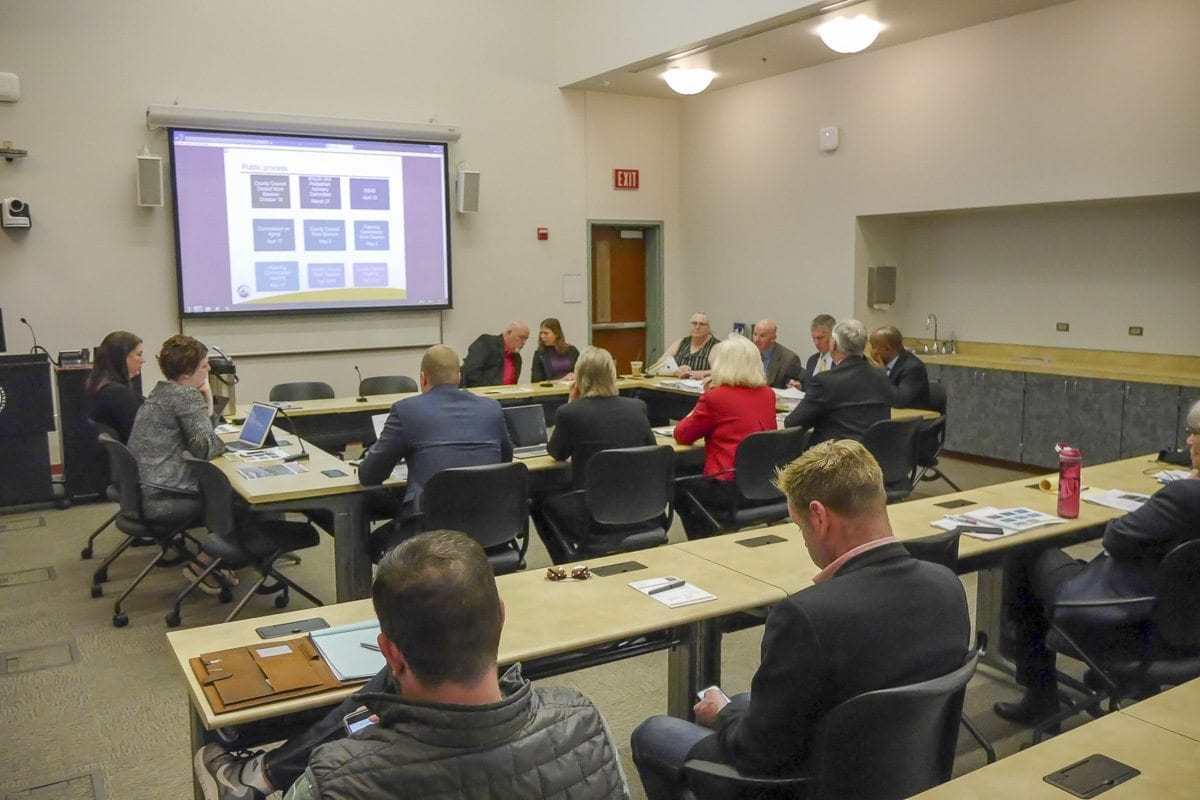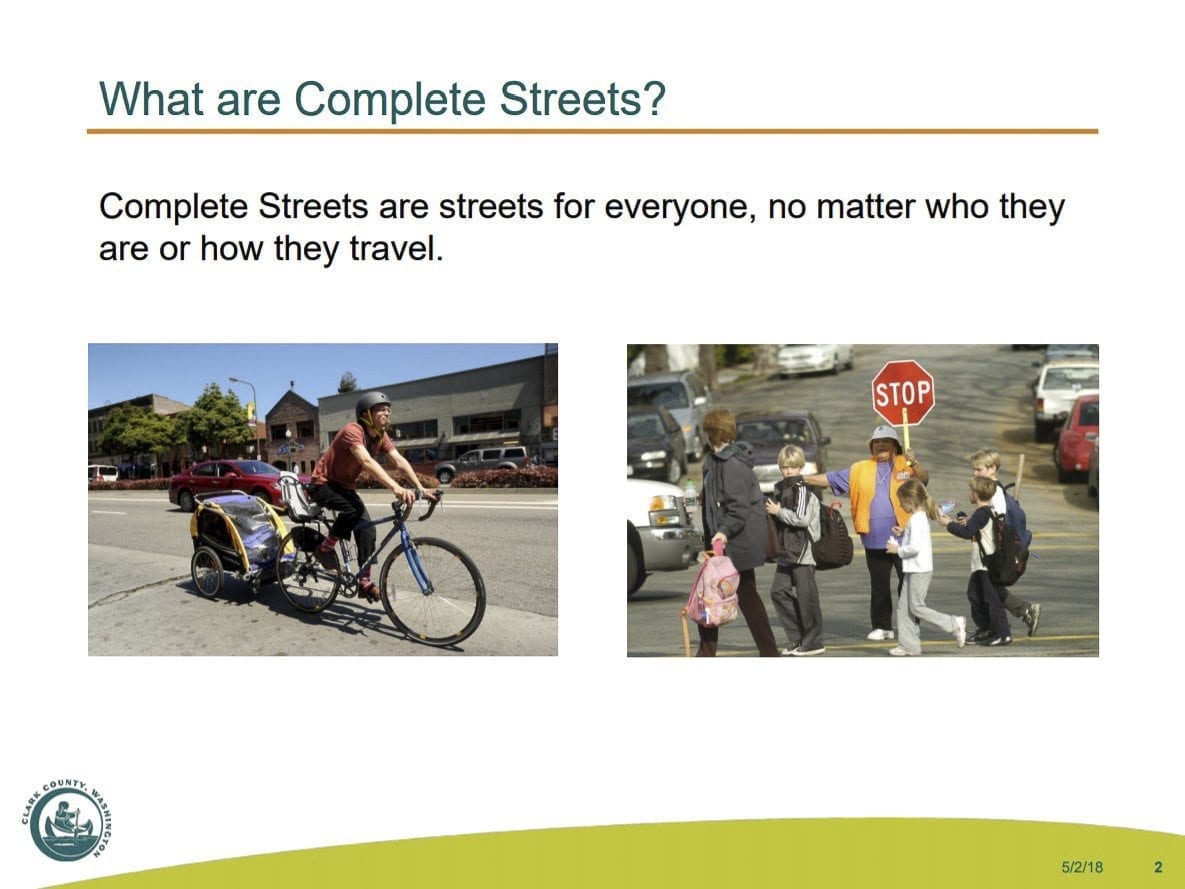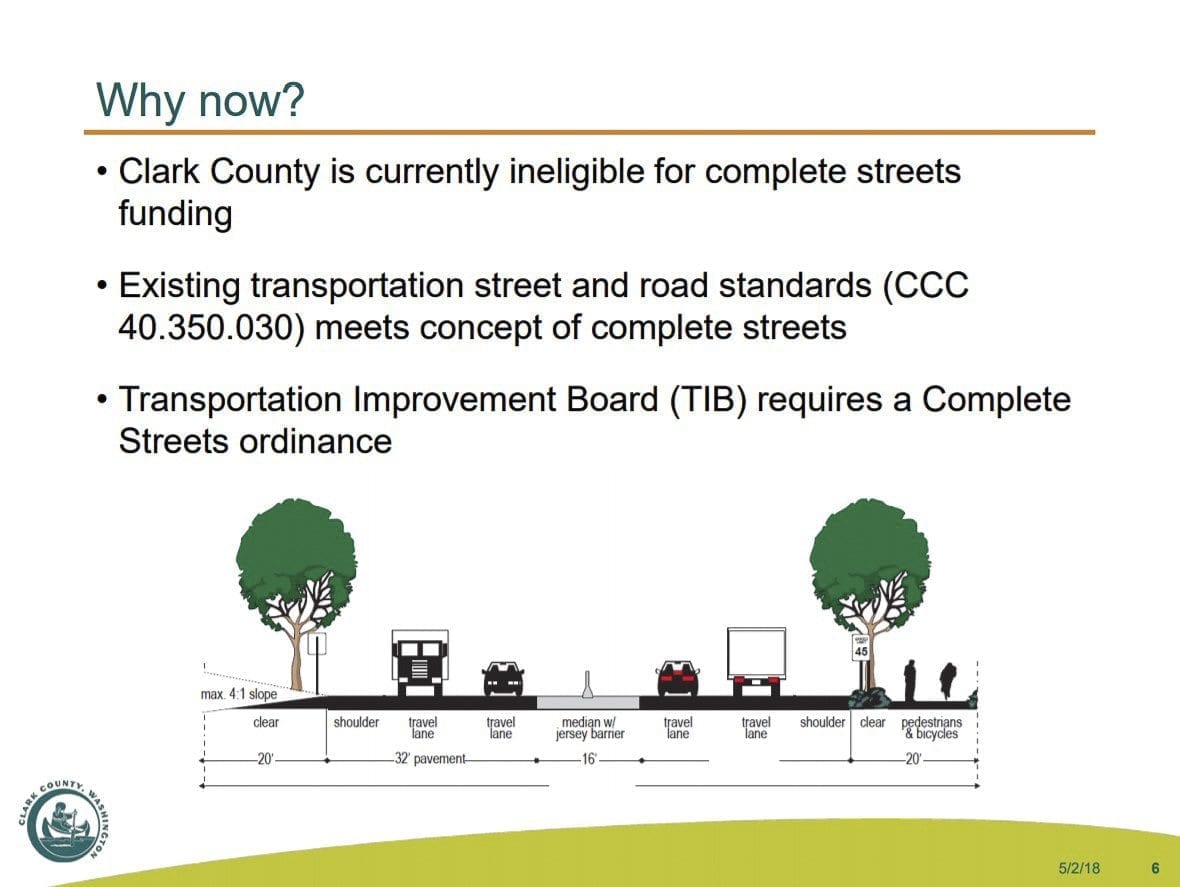Adoption of a Complete Streets ordinance would make the county eligible for grant money from the state
CLARK COUNTY — What’s in a name? For Clark County, it could be up to half a million dollars.
At a Wednesday morning council work session, planning department staffers explained why the council should adopt a Complete Streets ordinance, essentially to qualify for grant money from the state that can be used for local transportation initiatives.

The Complete Streets program was introduced by the state legislature nearly seven years ago as a way of setting down into law the concept that streets should be for everyone, from cars to bicyclists and pedestrians of all ages.
According to County Planner Gary Albrecht, the current codes the county uses for road projects already meet the Complete Streets requirements, but the county has never formally adopted the concept.
“We have street standards already that we’re using that meet the concept of Complete Streets,” Albrecht told the council members. “The arterials, the collectors, have designations in them that already accommodate for sidewalks for pedestrians, already accommodate for bicyclists and travel lanes.”

The county must adopt a Complete Streets ordinance in order to be eligible for Washington State Transportation Improvement Board grants, which range from $115,000 to $500,000 annually. The funds are designated as flexible, meaning the county could use them for a range of transportation projects, so long as they fall within the Complete Streets umbrella. That might mean adding sidewalks to existing streets, new crosswalks, and other improvements.
One thing you’re not likely to see though are road diets, at least in unincorporated Clark County. Council member Eileen Quiring made it a point to say she won’t vote for a Complete Streets ordinance if it means taking away room for cars on some streets.
“I watched the city of Portland, and Multnomah County, change four-lane streets to two-lane car streets,” she says, “and put in bike paths. And there were already sidewalks, but they took out actual travel lanes for cars and they put bike paths. And I don’t want to see that. I don’t want to see us transforming what we already have difficulty getting around in this county with our transportation plan, eliminating general purpose lanes for cars.”

Quiring was told that road diets are something happening more in urban environments, rather than “the fringe,” which is what most of Clark County’s roads would be considered. Vancouver Mayor Anne McEnerney-Ogle, at a transportation forum hosted by the League of Women Voters of Clark County last month, mentioned that road diets could soon be a reality in her city.
“Pedestrian safety is a huge problem right now,” McEnerny-Ogle told the group. “What’s causing that? Is it distracted drivers? Probably. We may be looking at a road diet, and it’s not going to be an easy thing of taking four lanes down to three – one in each direction and a center turn, but as we look at it we are rebuilding and building new roads with this idea of Complete Streets.”

For now, at least, there are no plans within Clark County’s transportation system to remove any vehicle lanes, but future new roads will certainly include more safety improvements for bicyclists and pedestrians. The planning commission staffers also assured the council that a Complete Streets ordinance likely would not add to the cost of projects in the pipeline, since current codes match up to mandates in the state program.
The discussion over Complete Streets will pop up again for a Planning Commission hearing that the public can weigh in on May 17, before heading to the full council for a vote by this Fall.





